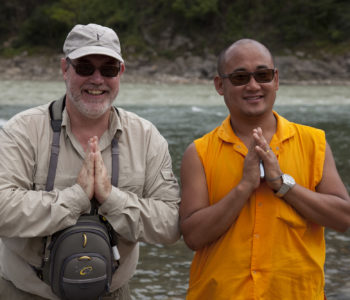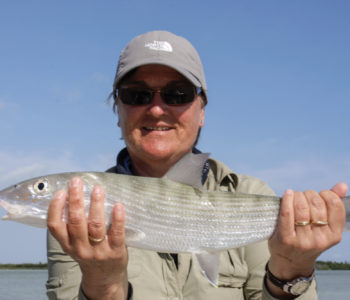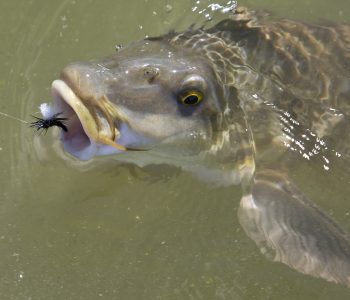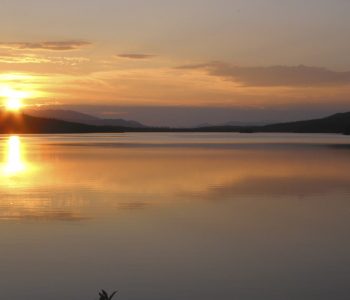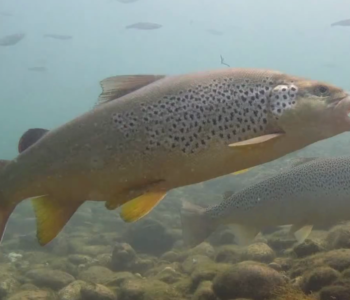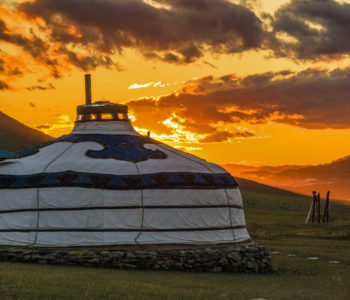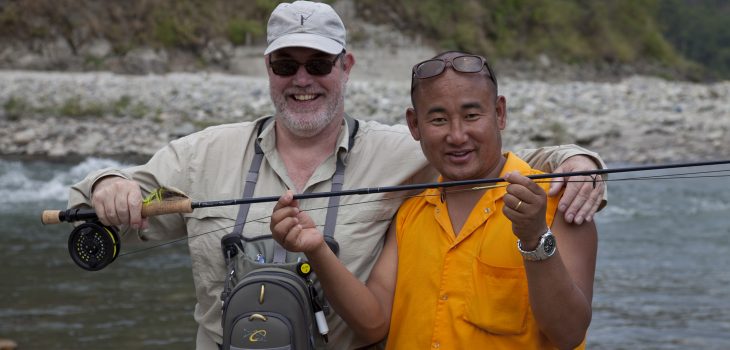
Fly fishing in the land of monks and butterflies
Text: Hans van Klinken
Photographs: Rogue Anglers, Dick Laarman and Hans van Klinken
At the Dutch fly fair in May 2012, I overheard a few fly fishermen complaining loudly about one of their recent fishing trips. Not only did this catch me by surprise, it set me thinking too. One of the complainers had fished a place that I had fished for many years with great pleasure, enjoyment, and success. Of course I had my good and not so good “catching” days over the years, but I always felt that the fishing was great. The complaining was not only saddening, but it was clear the complainer directly linked poor catches to a bad trip. That inference has led me to write this article. I had just returned from a trip to India where the catches were quite poorly, but I still enjoyed an awesome trip. I can hardly wait to share my experiences enthusiastically with others who are willing to listen. As I continued to eavesdrop, the more motivated I became to write about a trip in which hardly any fish was caught. .
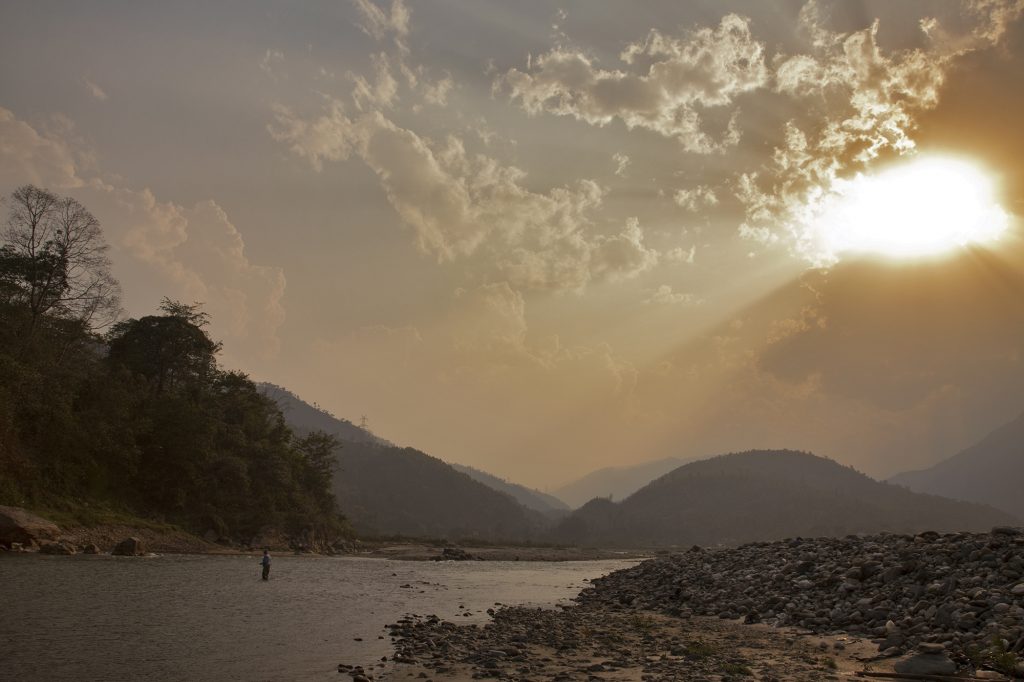
For me and for thousands of other fly fishermen worldwide, poor catches do not necessary equate to a bad fishing trip. I have fished for fifty years, and I have had dozens of trips where hardly any fish were landed. That lack of “success” never kept me from fishing every chance I could get. If one cannot handle poor catches and blank days, I think it is perhaps time to search for a pastime other than fly fishing. Let me illustrate for you: Since the early nineties, when I was closely involved with Fyn’s sea trout project, I made about 30 “week-long” trips to hunt for sea trout in the coastal waters of Denmark. Thanks to my diaries, which have my catch reports, I can tell factually that I had successful weeks with some extremely high numbers of catches. However, my records reveal that 1/3 of these trips were without catching any fish at all! Altogether there were , many day of toiling and sweating in all sorts of weather without any “catch” results. Not even a take! In total perhaps about 70 days of carrying on with fishing with only one expectation: a chance to hook an enormous sea-trout. I ask myself: “Did I have ten “bad” trips or did I learn a lot more about fishing and still had a good time? How could I just write-off the good company I shared and the fun we had? I think that fly fishing is so very much more than just throwing a line, wetting your flies, and “catching” fish. I have encountered dozens and dozens of people on Norway’s big salmon rivers, like Namsen, Gaula, Surna and Orkla. People who fished weeks or even years for salmon without any huge success. Did they rate their experiences as bad trips? If so, why would they come back year after year when the fishing was so “bad”? While writing this story, I am getting ready to leave for some Atlantic Salmon fishing in Newfoundland. I contacted the outfitter and friends and was told the conditions have never been so bad. But I can not wait to go! Why? My answer is simple: It is not only the catch that makes my trip worthwhile, but all the other experiences as well. And who can predict when the rains will come. The fishing could develop into the best fishing ever….overnight!
When I was given the opportunity to fish for the mighty “Golden Mahseer” (Tor putitora) in the North Eastern part of India, I jumped at the chance. I knew this once-in-a-lifetime trip was going to be exploratory and would be a somewhat “experimental” excursion forseveral reasons: First, the “Golden Mahaseer”, as the locals call them, is an endangered species of cyprinidae that is only found in the fast flowing rivers of the Himalayan region and south Asia. The mahseer population in India has been declining dramatically and is threatened by pollution, habitat loss, habitat degradation, and overfishing. Serious biologist now estimate the species has already declined by more than 50% and in 2010 the golden mahseer was added to the IUCN red list of threatened species. For me, this would mean that I was going to fish for a rare species the first time in my life, and that immediately became my focus for this trip. I wanted to discover and overcome the enormous challenges I would undoubtedly face while trying to find and catch a big mahseer with a fly rod. I also realized the odds of doing this were slim but that did not make the prospect of my journey less exciting. Instead, for me it was the opposite. I had never been to India and I was excited for the journey to begin. My expectation for this trip was the hope to catch a big golden mahseer and I actually not even set any goals at all.
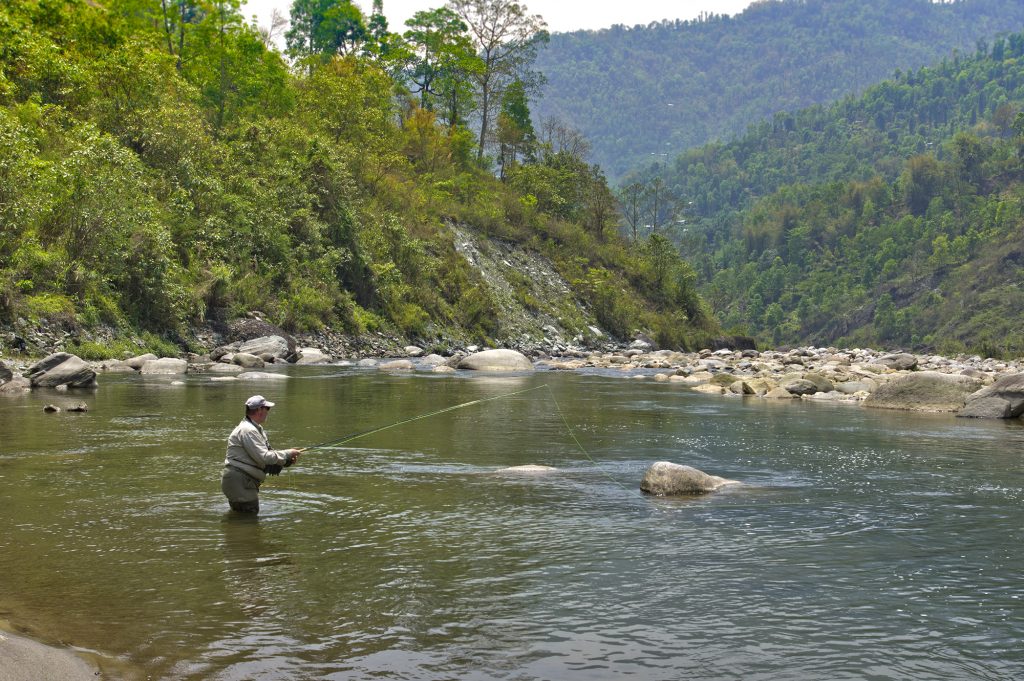
Now I have caught many carp in Holland by fly and they indeed give a very good fight, but those carp live mainly in ponds and lakes. Mahseer, on the other hand, live in fast flowing rivers and are accoustomed to powerful currents. These currents makes the mahseer one of the strongest freshwater species known to man. Robert Howitt, in Sports Illustrated wrote: “The angler’s first encounter with the mahseer is one that he never forgets: A great wrench on the rod heralds its take, then the ratchet screams on a fast emptying reel – the sensation is electrifying. Few freshwater fish will set of with such speed, fight for so long and strike both despondency and joy to the heart of the adversary.”
I also researched other historical books like “The rod in India” by Henry Sullivan Thomas. Thomas, wrote in 1897: “In my own opinion, and in that of others whom I have met, the Mahseer shows more sport for its size than the Salmon”. I found this book quite interesting but there was not much information on fly fishing, flies and special fly fishing techniques. And when I turned to the internet, I found even less about fly fishing for mahseer. Most websites I encountered that promoted mahseer fishing in India prinarily showed fish caught with spoons and bait. And I doubt the fish displayed were caught and released. Information about the best tackle, flies, and lines was no where to be found. What little information that had been written was mainly based on experiences with fly rods in the Ramganga river system. The best and most useful information I was able to obtain came from Jeff Currier, who’s 27 lb. mahseer will be submitted as a Fly Rod, “Catch and Release” IGFA World Record. In my research I discovered that fly fishing for mahseer is definitely not for the faint of heart!
 The area of Sikkim, in the far north-east, yielded no information about fly fishing nor any catches by fly rod at all. But I discovered some good news too. The state of Sikkim is blessed with beautiful and luxuriant natural resources in both flora and fauna, and there is still plenty of unspoiled jungle as well. And we were headed there to fish. With abundant diversity in plants and wildlife, Sikkim is like a heaven for adventurers and nature lovers. We litterly lost count of the different species of butterflies and the different songs from all types of unseen jungle birds. It is easy to rename Sikkim to the land of butterflies. Butterflies in Sikkim are known across the world, they are particularly numerous in the river valleys of Teesta, Rangeet and Rhenok. There are collections of butterflies from Sikkim in the National History Museum in London and in almost all major natural history museums across the world. It is not surprising considering the fact the Sikkim houses 700 different butterfly species, almost half of the total number of butterfly species found in Asia. If it is day or night, the jungle is always alive. Even though we only saw a small portion of Sikkim, our first impressions were amazing. The state provides tourists with valleys of breathtaking beauty and when the sky is clear, you can gaze upon the mighty mountains of the Himalayas. The state of Sikkim is bounded by Bhutan and West Bengal to the east, Nepal to the west, West Bengal to the south, and Tibet to the north.
The area of Sikkim, in the far north-east, yielded no information about fly fishing nor any catches by fly rod at all. But I discovered some good news too. The state of Sikkim is blessed with beautiful and luxuriant natural resources in both flora and fauna, and there is still plenty of unspoiled jungle as well. And we were headed there to fish. With abundant diversity in plants and wildlife, Sikkim is like a heaven for adventurers and nature lovers. We litterly lost count of the different species of butterflies and the different songs from all types of unseen jungle birds. It is easy to rename Sikkim to the land of butterflies. Butterflies in Sikkim are known across the world, they are particularly numerous in the river valleys of Teesta, Rangeet and Rhenok. There are collections of butterflies from Sikkim in the National History Museum in London and in almost all major natural history museums across the world. It is not surprising considering the fact the Sikkim houses 700 different butterfly species, almost half of the total number of butterfly species found in Asia. If it is day or night, the jungle is always alive. Even though we only saw a small portion of Sikkim, our first impressions were amazing. The state provides tourists with valleys of breathtaking beauty and when the sky is clear, you can gaze upon the mighty mountains of the Himalayas. The state of Sikkim is bounded by Bhutan and West Bengal to the east, Nepal to the west, West Bengal to the south, and Tibet to the north.
There are two principal rivers holding the mighty golden Mahseer: the rivers Teesta and Rangeet, together with a total length of 900 km. These rivers originate from the glaciers in North and West Sikkim. The most important other species of fish are: snow trout (Schizothorax sp.), three species of cat fish and a great number of Cyprinids. In the alpine regions in East, North and West Sikkim, there are excellent opportunities for trout fishing. Sadly our time was limited and distances are far, so we didn’t had the chance to wet our flies for trout.
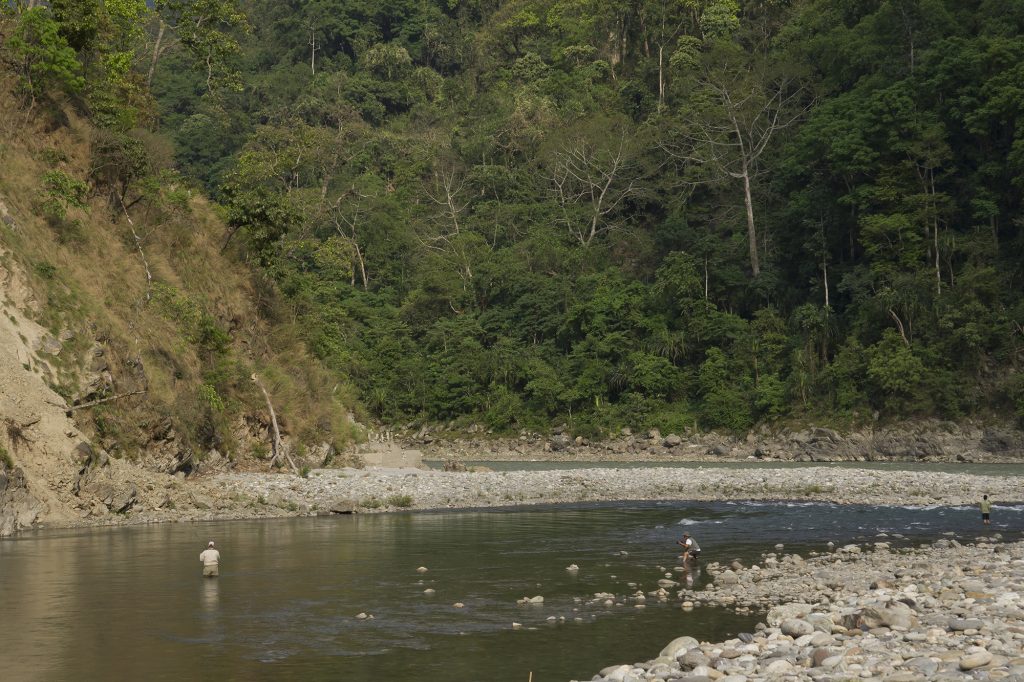
I found the main Teesta waterway to not be suitable for fly fishing because the river is continuously colored by sediments from the Himalayas. I expect some tributaries of the river might be suitable to fish for Mahseer with fly rod but we didn’t explore them so I have no first hand knowledge about the possibilities yet. But I do know, to experience the best fishing sometimes you have to avoid the easy access locations. So, in reality, this actually leaves us only ONE main river to fish for golden mahseer. The River Rangeet.
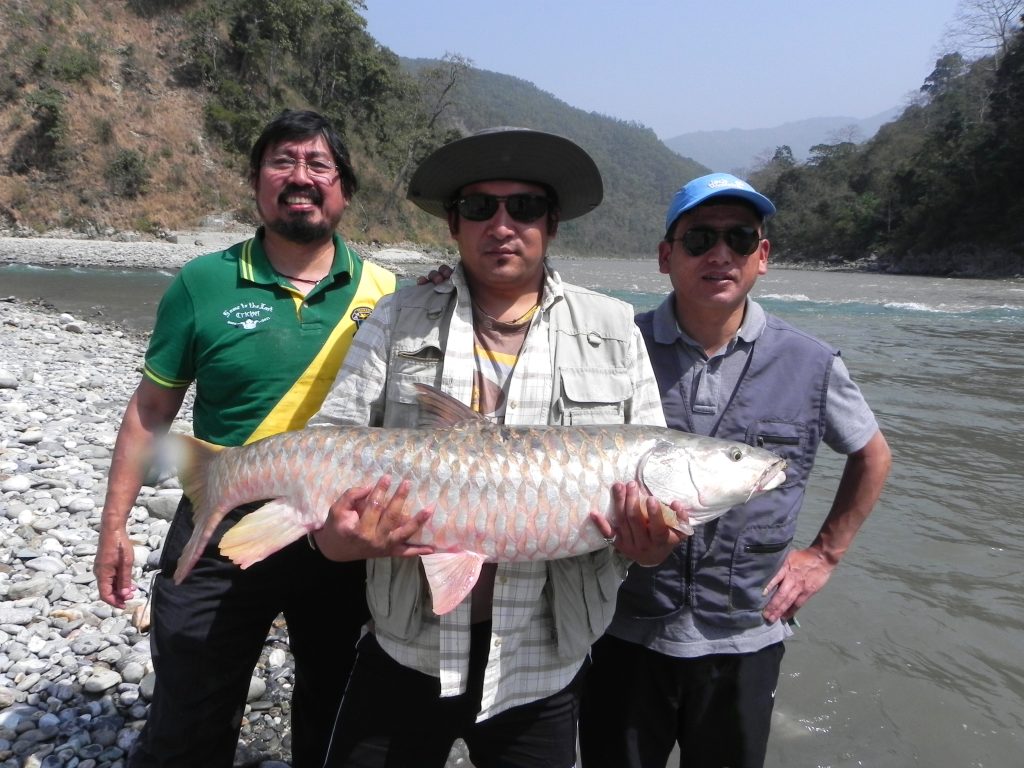
Some other good news is that the Sikkim government is trying very hard to reclaim the golden mahseer population. They have established an experimental mahseer breeding farm at Bagua, a diversion of the main course of river Rangeet in South Sikkim. The farm is for rearing of salvage mahseer fry, which they will exclusively stock in the lower belt of the state in order to save the fish from extinction. With this unique mahseer project in the south and the excellent trout fishing in the north they hope to make Sikkim an anglers paradise over the next few years.
My research concluded that we would be fishing in a region where fly fishing techniques would be virtually unheard of. After reading several stories about the immense power of the golden mahseer, I was slowly becoming obsessed by the spell of this magnificent and extremely powerful fish. Stories told of big golden mahseer having their favorite lies and feeding places in the strongest currents of the mighty Himalayan rivers. All this only made the fish more and more desirable. My good friend Dick Laarman also became infected with the mahseer virus and decided to join me. On one hand, it would be a short trip, just 10 days. But on the other hand, my preparation for this unique trip became my most challenging and hardest ever. We also went where nobody was familiar with fly fishing. This became more apparent when the local people stared in amazement as they witnessed our use of the fly rod. Where they come from is still unknown to me but on several occasions, in minutes they would just show up by the dozens like they lived somewhere underground. They clearly had never seen anybody use a fly rod before that moment. For me, it only made the challenges more exciting.
Our host Chandan Gupta and guide Vidhya Raj Gurung of Rogue Anglers, did a superb job of organizing our trip. Chandan picked us up from Bagdogra airport and took care of the tiniest of details. Our transportation, the accommodation and food was perfect and I must admit that we had an outstanding experience that was far above any of our expectations. It’s true that we got a big culture shock as soon arrived in India and travelling to Sikkim, but it was a nice one and we looked into it as photographers what surely is a lot different too. Quite often we didn’t know where to look and what to shoot on camera and sometimes our heads were moving more than watching a high-tech Ping-Pong game. How intense the daily impact of all our impressions really was, proved us when we fall asleep in minutes as soon we lay us down in the evening.

Until you hook your first good size mahseer, you have absolutely no idea about the amazing power of this fish. Even the littlest ones are very, very strong. When you hook a mahseer they act very much like bonefish. As soon they feel the hook they “run” just like an enormous bonefish and the play is very similar as well. When we were fishing one of the smaller tributaries I hooked my first big fish. To begin with, I did not expect to find any big fish at all in that tributary but I was wrong completely. With my lack of mahseer experience, on my first hook-up, I held the line with my left hand to prevent the fish from going between two big rocks. I felt the take and knew the hook was set well. I just thought I should fight it like a big salmon, showing him who was in charge. That was an essential mistake. As soon the mahseer begins its run, you must let him go, exactly as you do with bonefish or lady fish. If your line is tangled, or the drag of your reel is set too tight, or you try to stop or slow down the fish during its first run, you will for sure break your tippet or leader. I tried to man handle my first fish, a true whopper, and it turned out to be my only good opportunity of the entire trip. I still regret my impatience because this fish was really well hooked. So, whatever happens ignore rocks. Don’t try to prevent your fish going into a powerful downstream current. Let your fish run with just a little drag on the reel. Then, follow the fish as fast you can until the first run is nearly over. Begin to tighten the drag and start to fight it, but always be prepared for its next run. Our guide told me that sometimes the fish can have three or even four long runs and the last run will usually the toughest, especially near the end. He said that most fish are lost during the first run or when people finally attempt to land it. On the same spot, about an hour later I finally landed my first mahseer. A tiny one compare to the previous one but still it was a mahseer and caught by fly and I was happy because it proved me that it was still possible to catch mahseer by fly in this part of the world. The big fight, even when much too short, was the highlight of the entire trip and it will be in my memory forever and perhaps a good reason to return back after lessons learn.
The river Rangeet is not an easy river for fly fishing because at some places the wading was hard, sometimes even tricky too because the rocks were slippery and steep off’s prevent you from wading as well. For young people surely extremely exciting water but we getting older and our skills to keep our body in balance have been reduced too. An extra handclap we face because the lack of fly fishing experiences from our host and guide who both were experienced spin casters only. In spite this all, we still managed to find a few good spots where we really enjoy our fly fishing, especially Dick who uses his double hand rod as a real casting expert and was able to reach places where I never would be able to land my flies. However with my single hand rod and special sink tip lines I fished the bottom parts more intensively. That means as a team we were able to try a lot of different techniques and fish completely different parts of the river in the same time. Although the size of our catch left something to be desired by my standards, we still enjoyed some excellent fly fishing in the most breathtaking valleys imaginable. Our success also suffered from extreme weather conditions—very heavy thunderstorms higher up in the Himalayan mountains—and the resulting discolored water. In situations like that, a good friendship and lots of humor is essential to keep the mood high.
After a great deal of experimentation and using just about every trick in my book, I was finally successful in landing six mahseer. Although it wasn’t the big golden mahseer I had dreamed of fighting here, we did catch our share and it was one of these fly fishing experience that I will not soon forget. It was also a trip in which we made a lot of new friends and that always let you feel good. When I am really objective and honest I must confess that I never ever learned so much on fly fishing in unknown waters in such a short time as here in Sikkim.
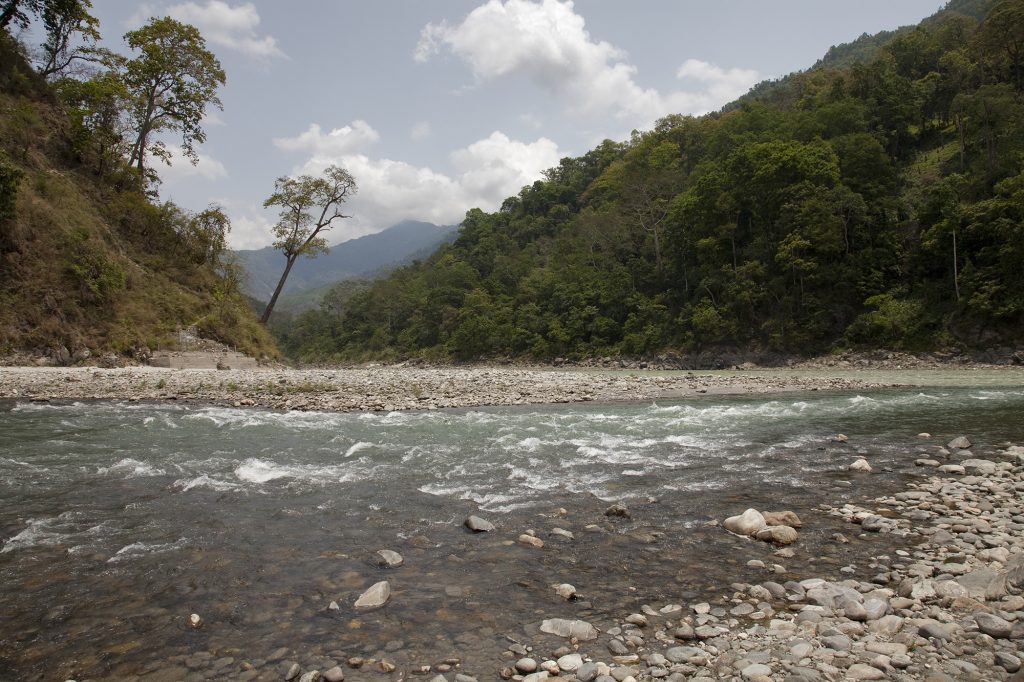
While there, I experienced another first in my fly fishing career. One day on the water, I encountered some monks praying at the confluence we were fishing. They allowed me to take some pictures and after their prayers they watched me cast. They asked questions and I explained as best I could who I was, why I was there and what I was doing with this strange equipment. They had seen fishermen on these waters before, to be sure, by not necessarily fly fishermen.
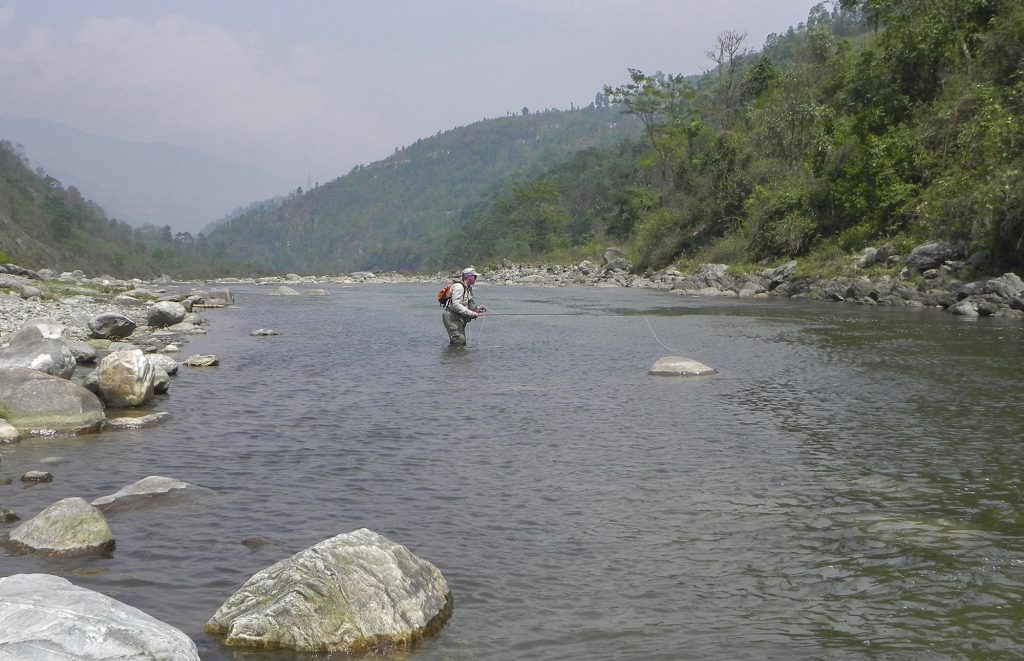
Now, these Monks don’t fish nor do they eat fish. But as they listened to my story about fishing with my hand tied flies, using barbless hooks and observing catch and release principles, they started to understand my passion for fly fishing and the quarry I chase. I described to them how fly fishing for me is actually a deep personal connection between myself and nature-a wildlife meditation, so to speak.
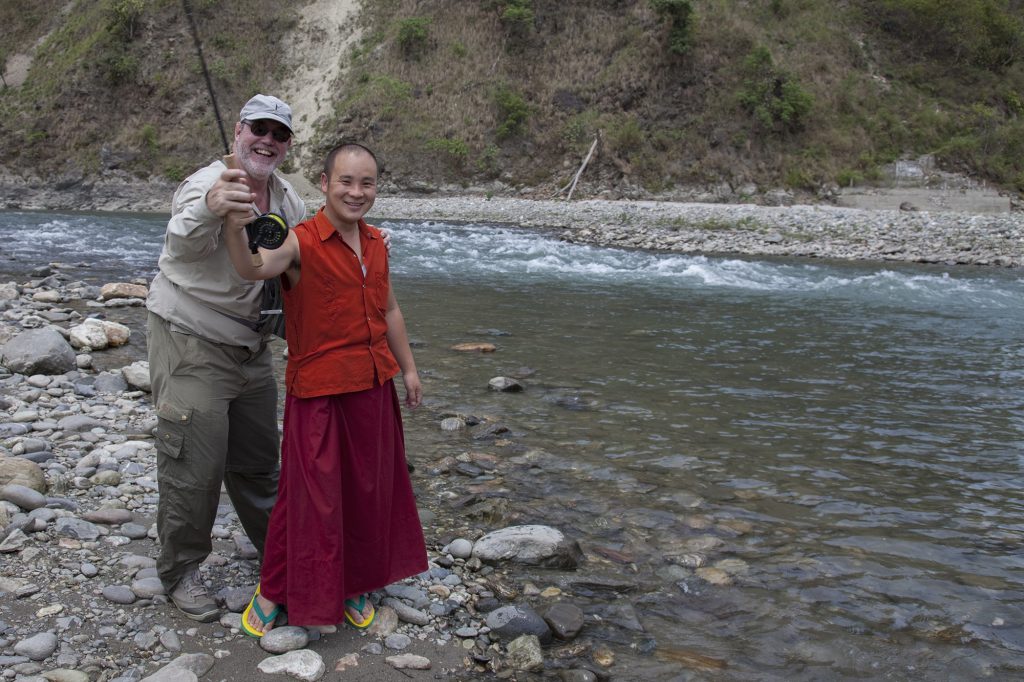
I cannot stretch the truth to say that I actually fished with the monks, but one asked to try a few casts in order that he might get a better sense of what it’s like. That small amount of casting instruction with a real monk surely made my day.
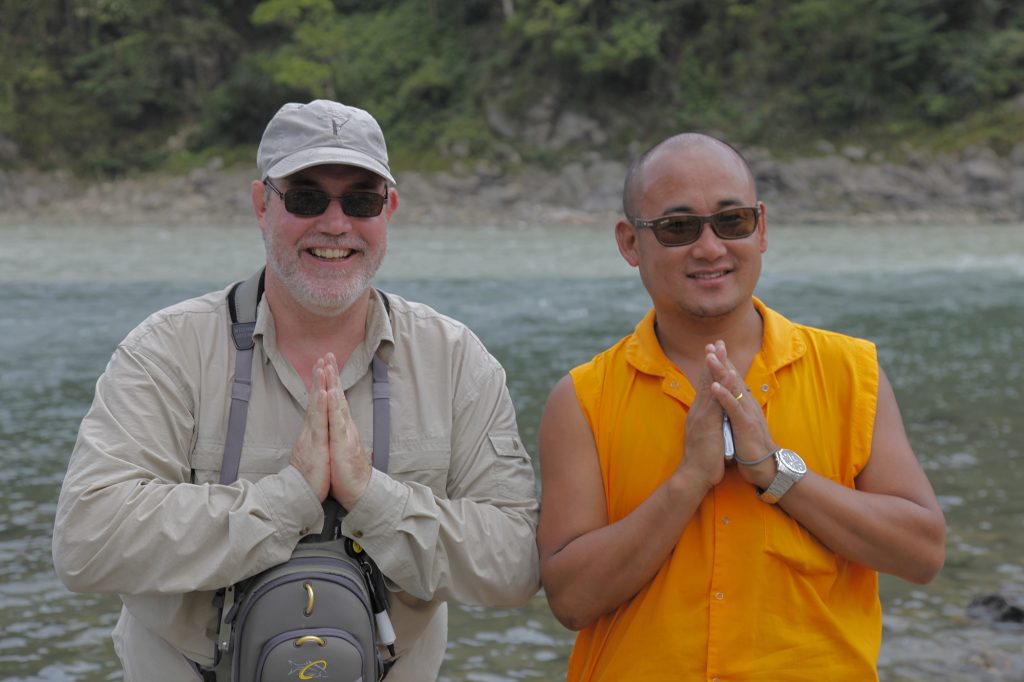
In return, he blessed my rod. About 2 hours later I hooked my second big fish and although it was on-and-off after a short fight, I’m going to attribute the hook-up to the monk’s blessing. Another 30 minutes later, I caught my biggest fish of the entire trip. Far smaller compared to what I had just had on my line earlier, but a beautiful fish and great day nonetheless.

